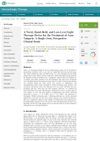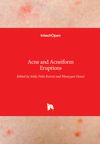Comparison of Comedolytic Effect of Benzoyl Peroxide and Adapalene in Rhino Mice
April 2017
in “
Journal of Dermatological Science
”

TLDR Benzoyl peroxide and adapalene gels work differently to reduce acne in mice.
The study compared the effects of 2.5% benzoyl peroxide (BPO) gel and 0.1% adapalene gel on the comedones of rhino mice, a model known for spontaneous comedone formation. The mice were treated with either BPO for up to 9 weeks or adapalene for up to 3 weeks. Results indicated that BPO gel reduced comedone size after 7 and 9 weeks without affecting their number and slightly thickened the epidermis. In contrast, adapalene gel decreased both the size and number of comedones and significantly thickened the epidermis after 3 weeks, also altering the mRNA expression of differentiation factors and cell adhesion molecules. The study concluded that BPO and adapalene gels have distinct mechanisms of action in their comedolytic effects.




